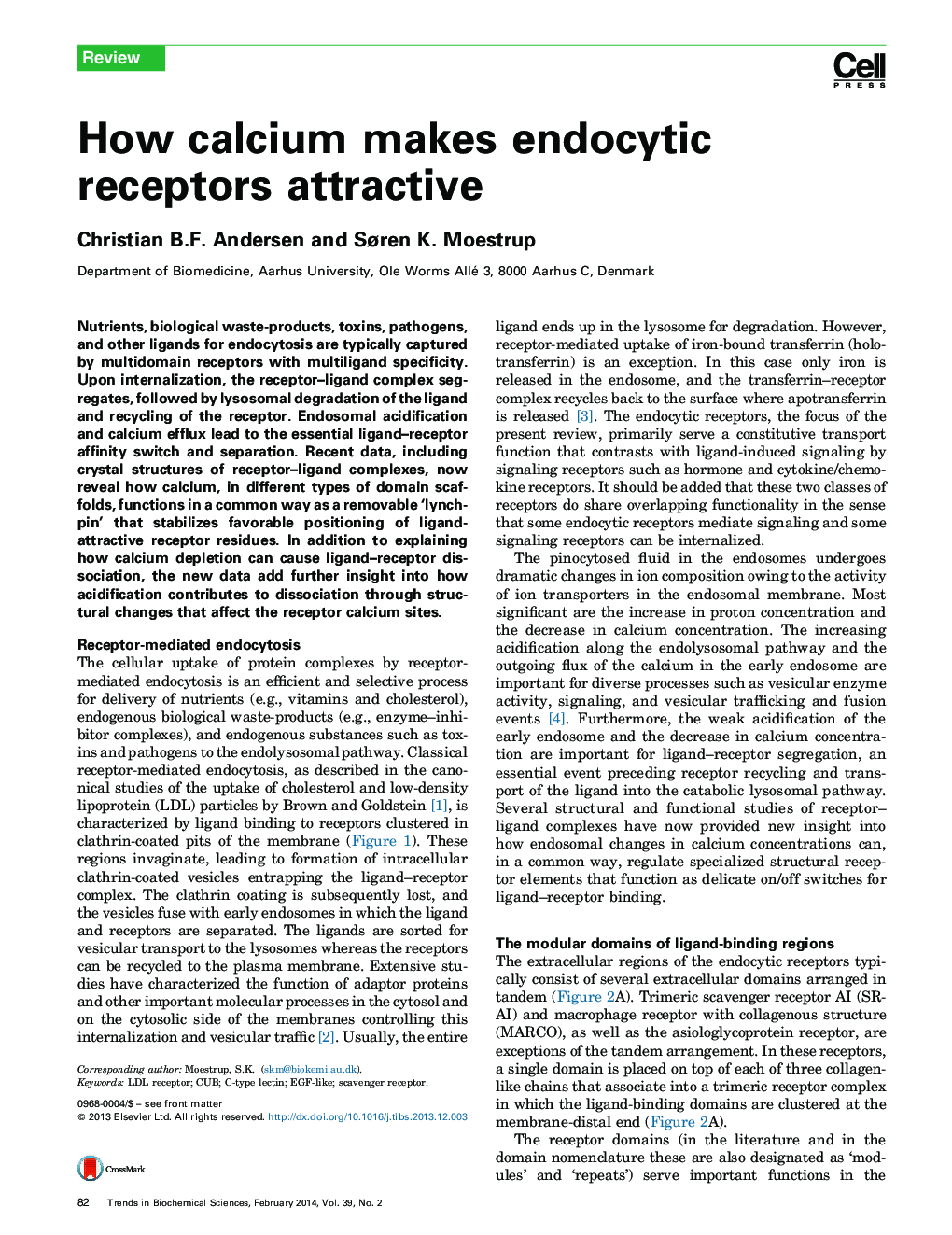| Article ID | Journal | Published Year | Pages | File Type |
|---|---|---|---|---|
| 2030724 | Trends in Biochemical Sciences | 2014 | 9 Pages |
•Calcium plays a role in the coupling/uncoupling of ligands to receptors.•New crystal structures show similar calcium-binding modalities in different domain types.•Ligand uncoupling through acidification may involve calcium in direct and indirect ways.
Nutrients, biological waste-products, toxins, pathogens, and other ligands for endocytosis are typically captured by multidomain receptors with multiligand specificity. Upon internalization, the receptor–ligand complex segregates, followed by lysosomal degradation of the ligand and recycling of the receptor. Endosomal acidification and calcium efflux lead to the essential ligand–receptor affinity switch and separation. Recent data, including crystal structures of receptor–ligand complexes, now reveal how calcium, in different types of domain scaffolds, functions in a common way as a removable ‘lynchpin’ that stabilizes favorable positioning of ligand-attractive receptor residues. In addition to explaining how calcium depletion can cause ligand–receptor dissociation, the new data add further insight into how acidification contributes to dissociation through structural changes that affect the receptor calcium sites.
